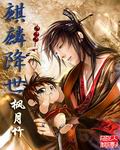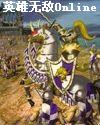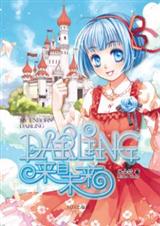The Library-第12章
按键盘上方向键 ← 或 → 可快速上下翻页,按键盘上的 Enter 键可回到本书目录页,按键盘上方向键 ↑ 可回到本页顶部!
————未阅读完?加入书签已便下次继续阅读!
r of the books of the New Testament in Bibles of the thirteenth century is usually according to one or other of the three following arrangements:
(1。) The Evangelists; Romans to Hebrews; Acts; Epistles of S。 Peter; S。 James; and S。 John; Apocalypse。
(2。) The Evangelists; Acts; Epistles of S。 Peter; S。 James; and S。 John; Epistles of S。 Paul; Apocalypse。 This is the most mon。
(3。) The Evangelists; Acts; Epistles of S。 Peter; S。 James; and S。 John; Apocalypse; and Epistles of S。 Paul。
On the fly leaves of these old Bibles there are often very curious inscriptions。 In one I have this: 〃Haec biblia emi Haquinas prior monasterii Hatharbiensis de dono domini regis Norwegie。〃 Who was this King of Norway who; in 1310; gave the Prior of Hatherby money to buy a Bible; which was probably written at Canterbury? And e has a Norwegian sound; and reminds us of St。 Thomas of that surname。 In another manuscript I have seen
〃Articula Fidei: Nascitur; abluitur; patitur; descendit at ima Surgit et ascendit; veniens discernere cuncta。〃
In another this:
〃Sacramenta ecclesiae: Abluo; fumo; cibo; piget; ordinat; uxor et ungit。〃
I will conclude these notes on MS。 Bibles with the following colophon from a copy written in Italy in the fifteenth century:
〃Finito libro vivamus semper in Christo Si semper in Christo carebimus ultimo leto。 Explicit Deo gratias; Amen。 Stephanus de Tantaldis scripsit in pergamo。〃
2。 The 〃Psalter〃 of the thirteenth century is usually to be considered a forerunner of the 〃Book of Hours。〃 It always contains; and usually mences with; a Calendar; in which are written against certain days the 〃obits〃 of benefactors and others; so that a well filled Psalter often bees a historical document of high value and importance。 The first page of the psalms is ornamented with a huge B; which often fills the whole page; and contains a representation of David and Goliath ingeniously fitted to the shape of the letter。 At the end are usually to be found the hymns of the Three Children; and others from the Bible together with the Te Deum; and sometimes; in late examples; a litany。 In some psalters the calendar is at the end。 These Psalters; and the Bibles described above; are very frequently of English work; more frequently; that is; than the books of Hours and Missals。 The study of the Scriptures was evidently more popular in England than in the other countries of Europe during the Middle Ages; and the early success of the Reformers here; must in part; no doubt; be attributed to the wide circulation of the Bible even before it had been translated from the Latin。 I need hardly; perhaps; observe that even fragments of a Psalter; a Testament; or a Bible in English; are so precious as to be practically invaluable。
3。 We are indebted to Sir W。 Tite for the following collation of a Flemish 〃Book of Hours〃:
1。 The Calendar。
2。 Gospels of the Nativity and the Resurrection。
3。 Preliminary Prayers (inserted occasionally)。
4。 Horae(Nocturns and Matins)。
5。 (Lauds)。
6。 (Prime)。
7。 (Tierce)。
8。 (Sexte)。
9。 (None)。
10。 (Vespers)。
11。 (pline)。
12。 The seven penitential Psalms
13。 The Litany。
14。 Hours of the Cross。
15。 Hours of the Holy Spirit。
16。 Office of the Dead。
17。 The Fifteen Joys of B。 V。 M。
18。 The seven requests to our Lord。
19。 Prayers and Suffrages to various Saints。
20。 Several prayers; petitions; and devotions。
This is an unusually full example; but the calendar; the hours; the seven psalms; and the litany; are in almost all the MSS。 The buyer must look carefully to see that no miniatures have been cut out; but it is only by counting the leaves in their gatherings that he can make sure。 This is often impossible without breaking the binding。
The most valuable 〃Horae〃 are those written in England。 Some are of the English use (Sarum or York; or whatever it may happen to be); but were written abroad; especially in Normandy; for the English market。 These are also valuable; even when imperfect。 Look for the page before the mencement of the Hours (No。 4 in the list above); and at the end will be found a line in red;〃Incipit Horae secundum usum Sarum;〃 or otherwise; as the case may be。
4。 Missals do not often occur; and are not only very valuable but very difficult to collate; unless furnished with catchwords or signatures。 But no Missal is plete without the Canon of the Mass; usually in the middle of the book; and if there are any illuminations throughout the volume; there will be a full page Crucifixion; facing the Canon。 Missals of large size and pleteness contain(1) a Calendar; (2) 〃the proper of the Season;〃 (3) the ordinary and Canon of the Mass; (4) the munal of Saints; (5) the proper of Saints and special occasions; (6) the lessons; epistles; and gospels; with (7) some hymns; 〃proses;〃 and canticles。 This is Sir W。 Tite's list; but; as he remarks; MS。 Missals seldom contain so much。 The collector will look for the Canon; which is invariable。
Breviaries run to an immense length; and are seldom illuminated。 It would be impossible to give them any kind of collation; and the same may be said of many other kinds of old servicebooks; and of the chronicles; poems; romances; and herbals; in which mediaeval literature abounded; and which the collector must judge as best he can。
The name of 〃missal〃 is monly and falsely given to all old servicebooks by the booksellers; but the collector will easily distinguish one when he sees it; from the notes I have given。 In a Sarum Missal; at Alnwick; there is a colophon quoted by my lamented friend Dr。 Rock in his 〃Textile Fabrics。〃 It is appropriate both to the labours of the old scribes and also to those of their modern readers:
〃Librum ScribendoJon Whas Monachus laborabat Et mane Surgendomultum corpus macerabat。〃
It is one of the charms of manuscripts that they illustrate; in their minute way; all the art; and even the social condition; of the period in which they were produced。 Apostles; saints; and prophets wear the contemporary costume; and Jonah; when thrown to the hungry whale; wears doublet and trunk hose。 The ornaments illustrate the architectural taste of the day。 The backgrounds change from diapered patterns to landscapes; as the modern way of looking at nature perates the monasteries and reaches the scriptorium where the illuminator sits and refreshes his eyes with the sight of the slender trees and blue distant hills。 Printed books have not such resources。 They can only show varieties of type; quaint frontispieces; printers' devices; and fleurons at the heads of chapters。 These attractions; and even the engravings of a later day; seem meagre enough pared with the allurements of manuscripts。 Yet printed books must almost always make the greater part of a collection; and it may be well to give some rules as to the features that distinguish the productions of the early press。 But no amount of 〃rules〃 is worth six months' practical experience in bibliography。 That experience the amateur; if he is wise; will obtain in a public library; like the British Museum or the Bodleian。 Nowhere else is he likely to see much of the earliest of printed books; which very seldom e into the market。
Those of the first German press are so rare that practically they never reach the hands of the ordinary collector。 Among them are the famous Psalters printed by Fust and Schoffer; the earliest of which is dated 1457; and the bible known as the Mazarine Bible。 Two copies of this last were in the Perkins sale。 I well remember the excitement on that occasion。 The first copy put up was the best; being printed upon vellum。 The bidding menced at 1000 pounds; and very speedily rose to 2200 pounds; at which point there was a long pause; it then rose in hundreds with very little delay to 3400 pounds; at which it was knocked down to a bookseller。 The second copy was on paper; and there were those present who said it was better than the other; which had a suspicion attaching to it of having been 〃restored〃 with a facsimile leaf。 The first bid was again 1000 pounds; which the buyer of the previous copy made guineas; and the bidding speedily went up to 2660 pounds; at which price the first bidder paused。 A third bidder had stepped in at 1960 pounds; and now; amid breathless excitement; bid 10 pounds more。 This he had to do twice before the book was knocked down to him at 2690 pounds。
A scene like this has really very little to do with bookcollecting。 The beginner must labour hard to distinguish different kinds of printing; he must be able to recognise at a glance even fragments from the press of Caxton。 His eye must be accustomed to all the tricks of the trade and others; so that he may tell a facsimile in a moment; or detect a fery。
But now let us return to the distinctive marks of early printed books。 The first is; says M。 Rouveyre;
1。 The absence of a separate titlepage。 It was not till 14761480 that the titles of books were printed on separate pages。 The next mark is
2。 The absence of capital letters at the beginnings of divisions。 For example; in an Aldine Iliad; the fifth book begins thus
'Greek text'
It was intended that the open space; occupied by the small epsilon ('epsilon symbol'); should be filled up with a coloured and gilded initial letter by the illuminator。 Copies thus decorated are not very mon; but the Aldine 〃Homer〃 of Francis I。; rescued by M。 Didot from a rubbish heap in an English cellar; had its due illuminations。 In the earliest books the guide to the illuminator; the small printed letter; does not appear; and he often puts in the wrong initial。
3。 Irregularity and rudeness of type is a 〃note〃 of the primitive printing press; which very early disappeared。 Nothing in the history of printing is so remarkable as the beauty of almost its first efforts。 Other notes are
4。 The absence of figures at the top of the pages; and of signatures at the foot。 The thickness and solidity of the paper; the absence of the printer's name; of the date; and of the name of the town where the press stood; and the abundance of crabbed abbreviations; are all marks; more or less trustust not be supposed that all books published; let us sa



![(Death Note同人)[DN同人]路过封面](http://www.667zw.com/cover/13/13229.gif)
![(love live同人)[绘希]瞳中佳人封面](http://www.667zw.com/cover/14/14128.gif)
![(综漫同人)[综]LINE!LINE!刑天游戏封面](http://www.667zw.com/cover/16/16450.jpg)
